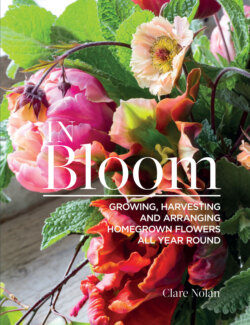Читать книгу In Bloom - Clare Nolan - Страница 31
На сайте Литреса книга снята с продажи.
GETTING YOUR TIMING RIGHT
ОглавлениеIt’s tempting to start sowing seed as soon as there’s a whiff of spring in the air, but don’t. Seed direct sown too early will often rot or get off to a bad start and in all likelihood will probably be overtaken by later-sown plants anyway. Be patient, wait for the soil to warm up first – emerging weed seedlings are a good indicator that the time is right.
The best way to figure out when to sow seed under cover is to work backwards from your last frost date. If you have no idea when this is, either ask at your local garden center or search online. There are plenty of websites that allow you to input your nearest town and give you the info you need.
Most seeds sown under cover should be started off just 4–6 weeks before the last frost – most plants will be ready to make the shift to the big outdoors at this point. Sow too early and you risk the plants being ready before the ground is warm enough – resulting in leggy and, most likely, pot-bound plants.
It helps to know the “days-to-bloom” for each variety – normally shown on the seed packet. Seeds with slow germination rates, or that take a while to get going, such as larkspur, stocks, and snapdragons need to be started off a little earlier than most annuals – which are started off 4–6 weeks before the last frosts. Some biennials, such as hollyhocks, sweet williams, and foxgloves, will flower in their first year if you sow them early enough.
There are some exceptions: hardy annuals can take a bit of cold so they can be sown earlier and planted out as young plants up to a month or so before the last frosts, as long as there’s no chance of the ground freezing. For me, this is about four weeks before the last frost in my area.
EXTRA SUPPLIES
If you start to get hooked on propagating like I did, you might find these extra supplies helpful:
Heated propagator – speeds up seed germination and cuttings.
A grow light and a timer – to ensure there’s enough light to start seedlings off without them becoming lanky.
A small gauge riddle – to sieve out lumps of soil to cover seedlings with a fine dusting.
A soil scoop – to save your hands.
Gravel trays – to fill with water and sit your seed trays in as it’s best to water from below.
Potting biennial foxgloves and hollyhock seedlings into 2 ¾ in (7cm) biodegradable mesh bags.
Foxglove seedlings coming up in soil blocks made using a “Micro 20”block maker. These biodegradable mesh bags are a good alternative to plastic pots.
